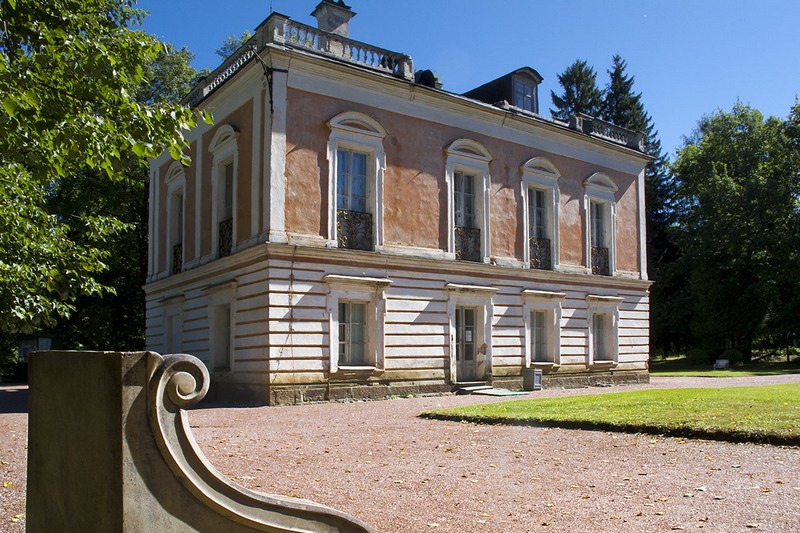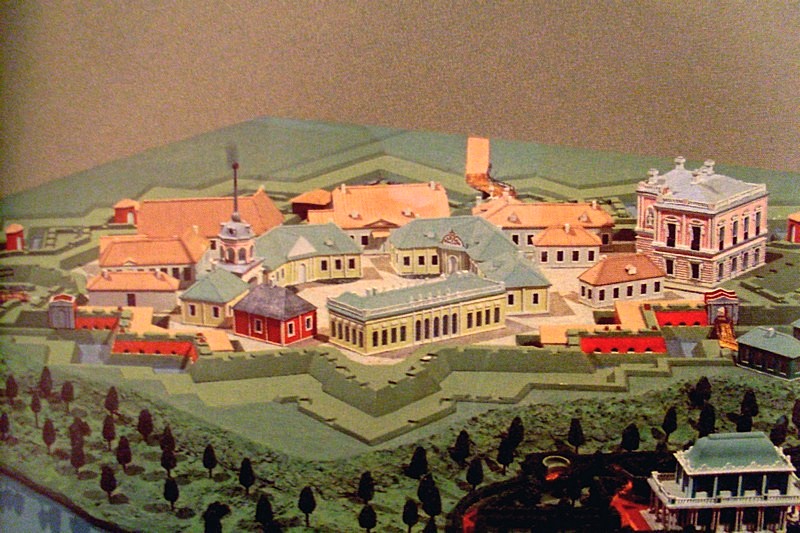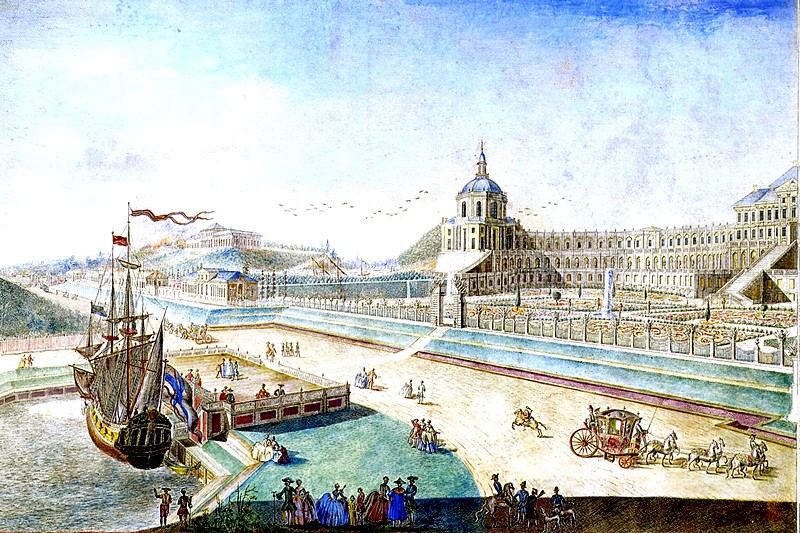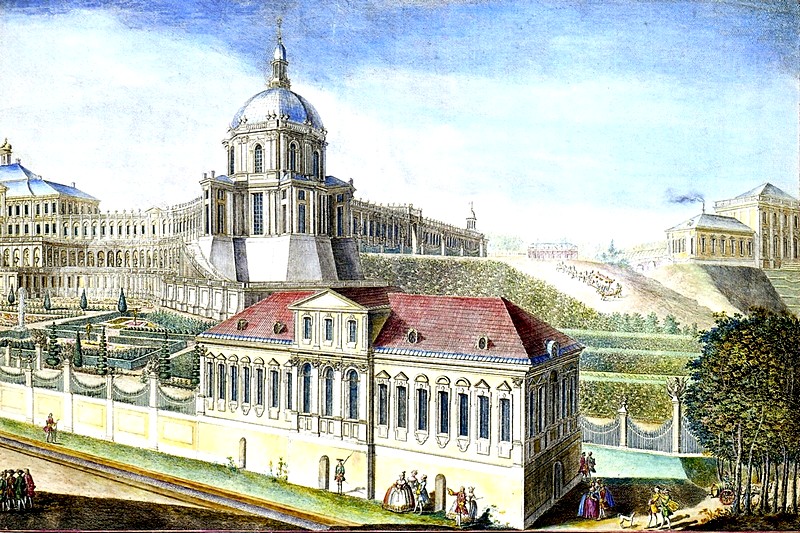St. Petersburg in the era of Peter III (1762)
Peter's reign was very brief and the Emperor did not manage to leave any notable traces in the history of the city. In the years before he ascended the throne, at the Oranienbaum estate (built originally for Peter the Great's favorite associate, Prince Alexander Menshikov) the young Peter III built a modest palace (the Palace of Peter III) and a type of a "training" fortress, Peterstadt. This fortress served as a kind of three-dimensional, life-sized textbook for training the heir to the throne in military matters. As Grand Duke, Peter imported regiments from his native Holstein, which did not increase his popularity among the Russians... Only the entrance gate and a portion of the earthworks have survived to our time.

In the 1750s, in order to train the heir to the throne in seamanship, a training fleet of four ships, including the Frigate St. Andrew, was created on a small and quite shallow pond on the Oranienbaum territory. Nearby, on the banks of the Karosta River, a pleasure garden was built with a Hermitage Pavilion, a Menagerie, a Chinese Cottage, a gazebo, and fountains. Unfortunately, from the time Peter was deposed through the 1780s, the structures were allowed to fall into disrepair, and by the beginning of the nineteenth century, all of the wooden buildings had been demolished and only the stone Palace of Peter III, built by the architect Antonio Rinaldi, and the Ceremonial Gates of the Peterstadt fortress have survived.

The main events of the coup that led to the deposition and death of Peter III took place in the outlying areas of Petersburg: Oranienbaum, Kronstadt, and Ropsha. At the moment that the coup was taking place in St. Petersburg, Peter was in his palace in Oranienbaum. He then went by boat with a small group of supporters to Kronstadt, a fortified island in the middle of the Gulf of Finland not far from Oranienbaum. There the Emperor hoped to find support from loyal troops at the fortress and the naval base, but instead he and his companions were not even allowed on shore, and so they returned to Oranienbaum. Here Peter's Holstein troops were trapped inside the Peterstadt Fortress by cavalry troops and Cossacks who had thrown in their lot on the side of Catherine. Peter was arrested and held in the Ropsha Palace under the security of a group of officers with Alexei Orlov. The Tsar, the grandson of Peter the Great, died in unclear circumstances (according to one version, during an argument with his guards) but in any case, the people were informed that the cause of death was of hemorrhoidal colic.
Peter III's grave can now be seen in the Cathedral of the Peter and Paul Fortress. However, after being deposed by his wife, the deceased emperor was originally buried in the Alexander Nevsky Monastery, and only in 1796, at the order of his son, Emperor Paul I, was the coffin containing his body transported to the Cathedral and reburied next to the tomb of his wife, Catherine the Great.



